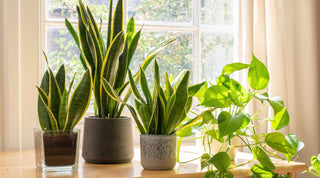Starting a vegetable garden can be a rewarding and delicious venture if you have a spacious backyard or a small sunny spot on your balcony.
Welcome to the wonderful world of vegetable gardening! In this guide, we'll walk you through the essential steps to create your very own vegetable haven.

Step 1: Choose the Right Location
The key to a successful vegetable garden starts with the right location. Vegetables need plenty of sunshine - aim for a spot that gets at least 6 to 8 hours of direct sunlight daily. If you’re limited on space, don’t fret; many vegetables can also thrive in containers on balconies or patios.
Step 2: Plan Your Garden Layout
Before you dig in, it’s important to plan your garden layout. Consider the size of your space and the growth habits of your chosen vegetables. Some plants, like tomatoes, need room to spread, while others, like carrots, prefer to grow downwards. Raised beds can be a great option for organizing your plants and ensuring good drainage.
Step 3: Prepare the Soil
Good soil is the foundation of a healthy garden. Most vegetables prefer a rich, well-draining soil. You can improve your soil by adding organic matter like compost or well-rotted manure. If you’re using containers, choose a high-quality potting mix.
Step 4: Select Your Vegetables
Choose vegetables that you enjoy eating, and that will do well in your climate. For beginners, easy-to-grow options include lettuce, radishes, tomatoes, cucumbers, and bell peppers. Consider the growing season in your area and whether you’ll start with seeds or seedlings.
Step 5: Planting Your Garden
Once you have your plants or seeds, it’s time to plant them. Follow the instructions on the seed packets or plant tags for spacing and depth. Remember to water your plants gently after planting to settle the soil around the roots.
Step 6: Watering and Maintenance
Regular watering is crucial, especially in the weeks after planting and during dry spells. However, avoid overwatering as this can lead to root rot. Mulching around your plants can help retain moisture and suppress weeds.
Step 7: Pest and Disease Management
Keep an eye out for pests and diseases. Practice preventive measures like crop rotation and using organic pesticides when necessary. Sometimes, the best defense is simply removing affected leaves or plants.
Step 8: Harvesting Your Vegetables
The most rewarding part of vegetable gardening is the harvest. Most vegetables are best picked when they are young and tender. Regular harvesting often encourages more production.
Step 9: Enjoy the Fruits of Your Labor
Finally, enjoy the fruits (or vegetables) of your labor! Freshly picked produce from your garden will always taste better than anything you can buy in a store. Plus, you’ll be satisfied knowing it was grown by your hands.
Conclusion:
Starting a vegetable garden is a fulfilling journey that can enhance your meals, your health, and even your backyard. With these steps, you’re well on your way to enjoying your own home-grown produce. Remember, gardening is a learning experience, so don’t be discouraged by initial challenges. Embrace the process, and before you know it, you’ll be a seasoned green thumb!



